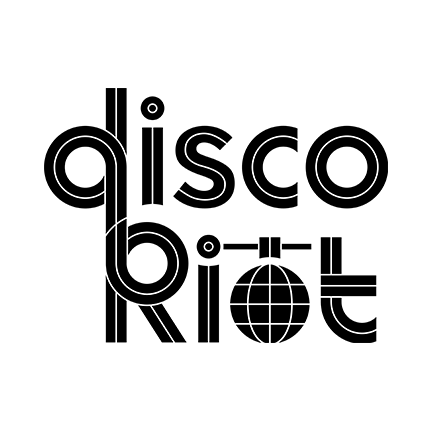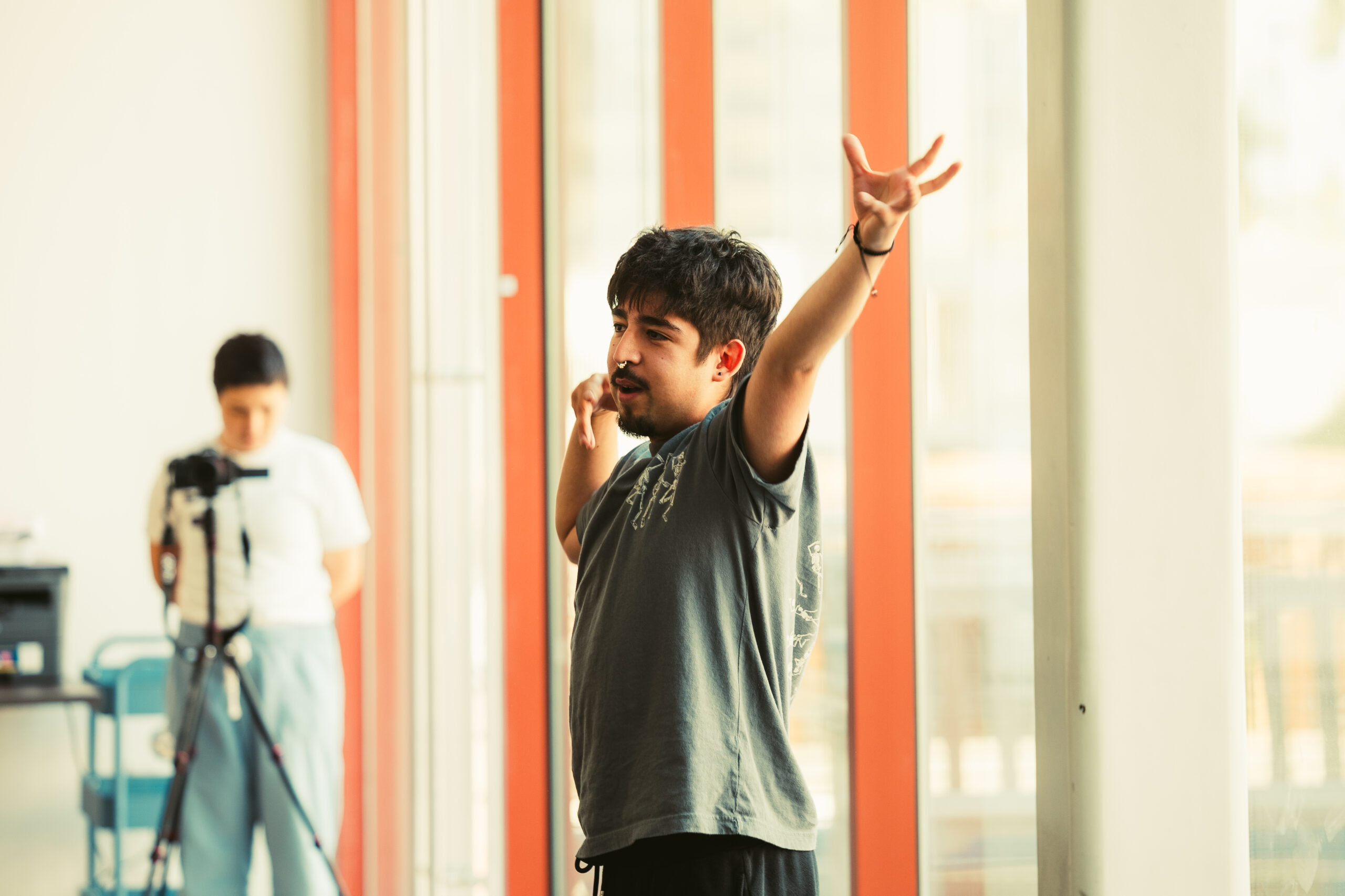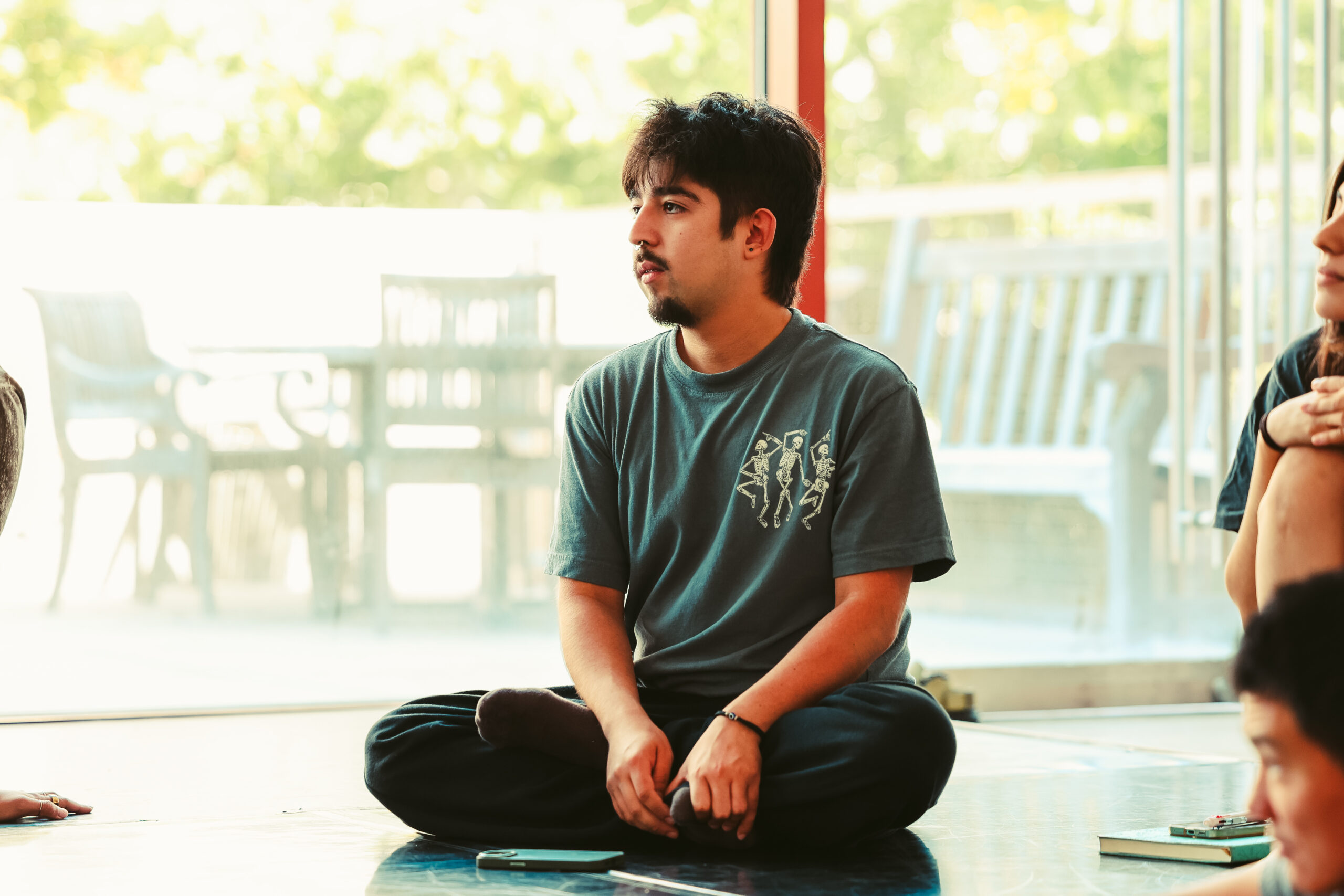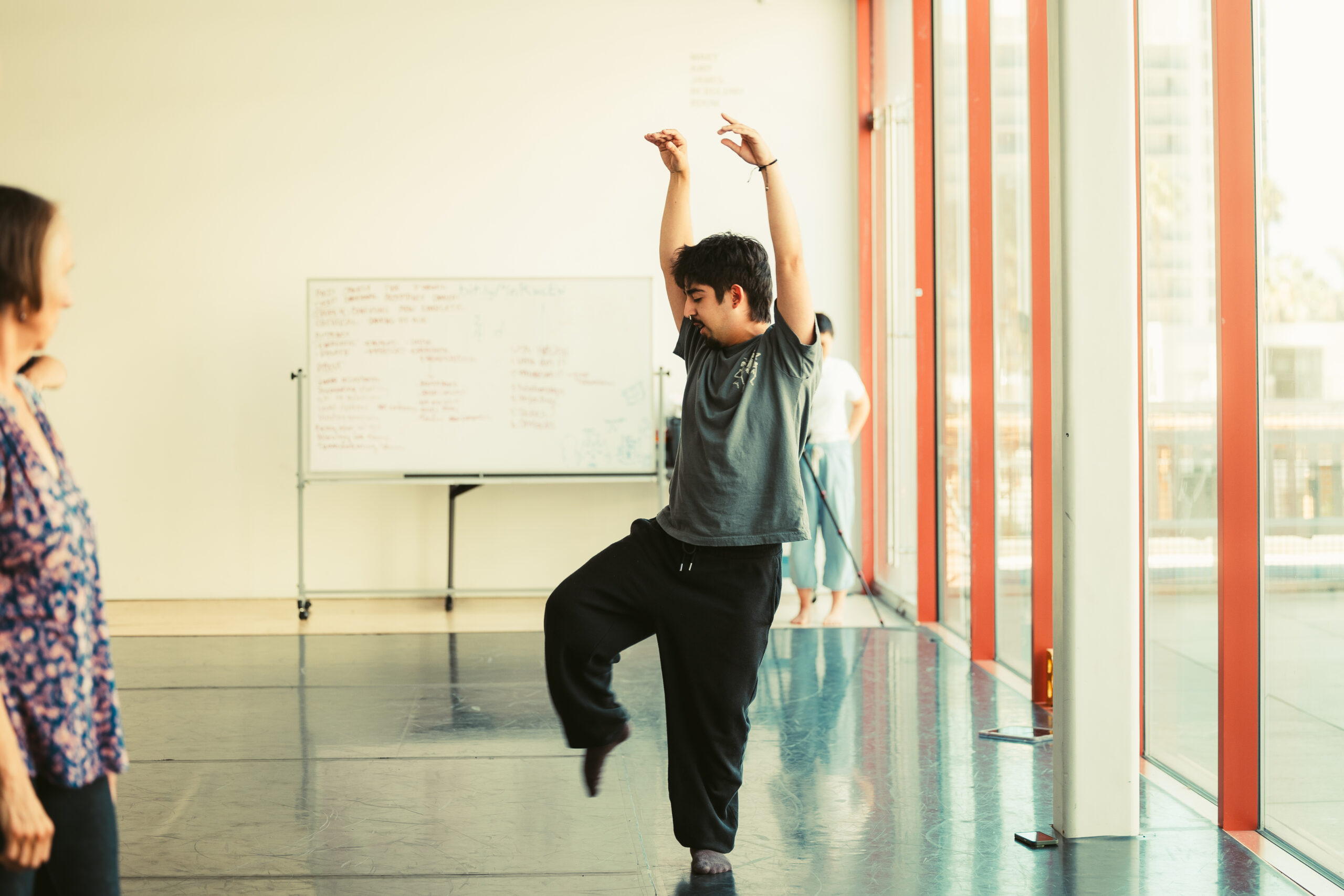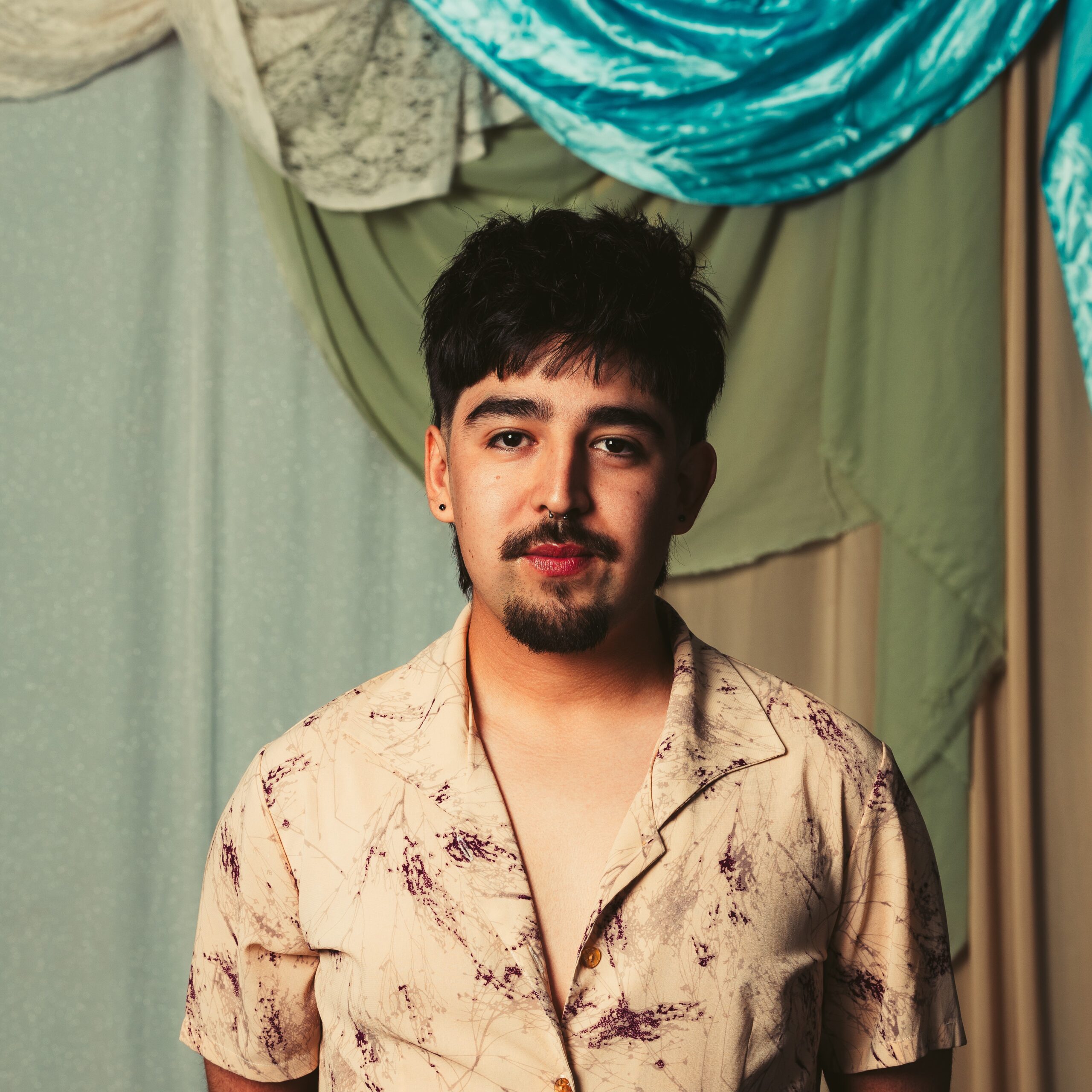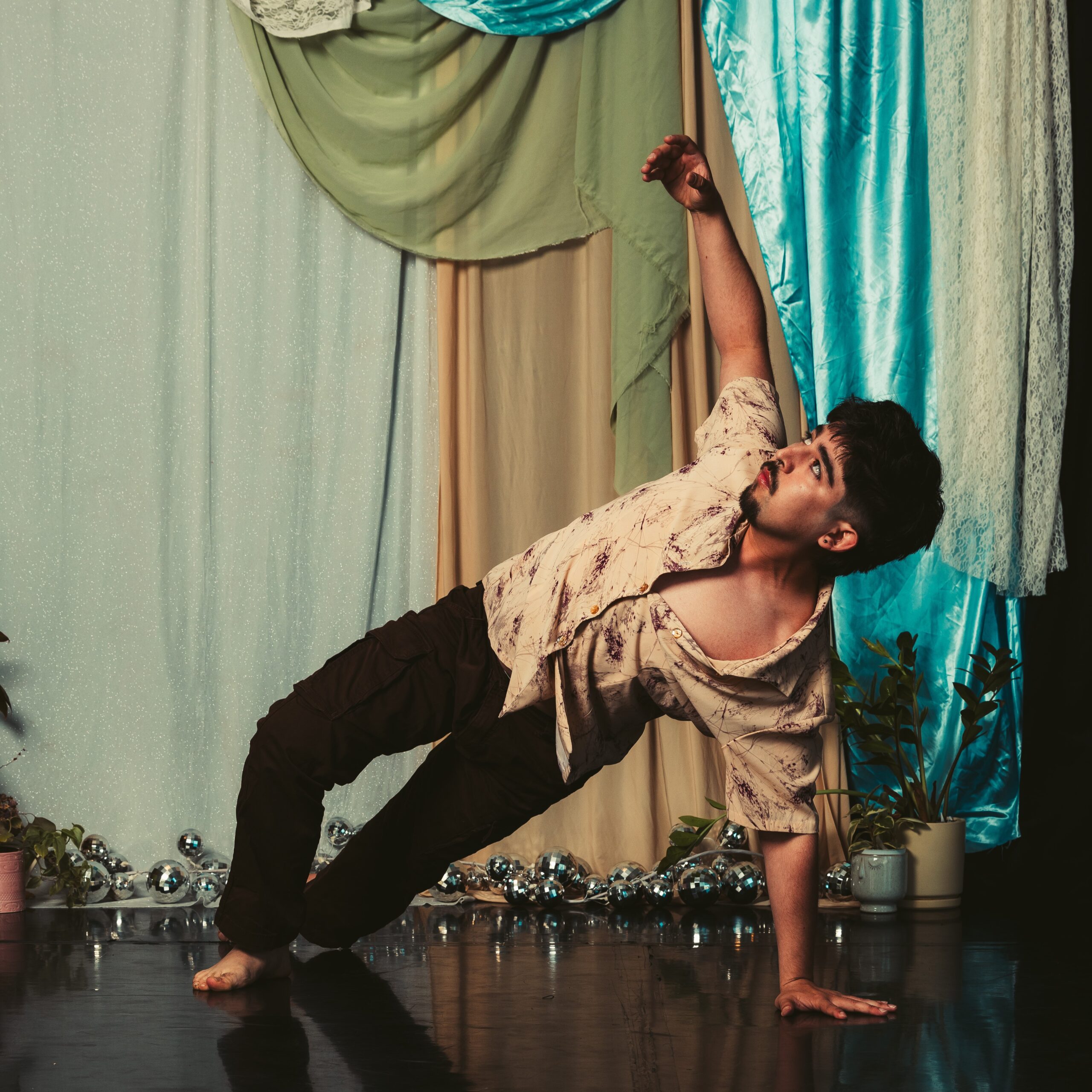MEET ERIK IZAAK
S P A C E Rising is an iteration of our S P A C E residency program, designed specifically to support our (R)evolution Mentorship Interns. Meet Erik Izaak! And make sure to join us for S P A C E Rising Showcase on October 10 & 11 at 7pm.
What inspirations, launching points, or ideas are you working with for your piece for the S P A C E residency? How has that developed over the course of your residency process?
I originally brainstormed this concept in my junior year of college when submitting a proposal to choreograph. I was mainly inspired by the movie Everything Everywhere All At Once and the different messages the movie has. I had been struggling with the feeling that life was becoming overwhelming, and getting wound up in my own thoughts….creating an everything bagel in my own head. I fell in love with the movie because I had felt seen in so many different ways and learned to approach life with a bit more tenderness. I was so caught up in trying to make sense of everything going on that I didn’t fully take in the specks of time that DID make sense. Then, I started to explore the feelings of relationships and how they can affect our identities (which happens to be one of the underlying themes in Everything Everywhere All At Once, and a theme that appears in most of my favorite movies). I didn’t understand why this felt so important to me, other than struggling with creating connections and relationships most of my life, and it was catching up to me in college. Revisiting this concept/piece for this residency and truly diving into it, I was able to do a lot of internal work to understand why these messages and themes felt crucial to me.
Most recently, I have been coming to terms with/understanding that I have possibly been living undiagnosed with Autism and ADHD. When learning about the effects Autism & ADHD have on social skills and sense of identity, I saw myself again, only this time not in a movie. I saw all my struggles being explained, and it validated my feelings of being lost in my head instead of making me feel like a stranger. I also learned about masking and realized that’s what I was doing most of my life without knowing. I relied on my relationships with others to create these masks for me, without truly understanding who I was beneath them all. This piece and concept started to embody research of self identity and the spirals that I felt like I was winding myself into. Further exploring what identity is when stripped away of all the expectation and weight of existence. Who can you become when you let go of expectation and worry? What power have you been hiding all along within the chaotic universe inside you?
Other than dance, what media are important to the overall theme of your piece? This could be music, projection, spoken word, visual etc. What role will these aspects play?
For the piece, I am collaborating with Casey Hall Landers to design projections. They will be video-djing with different projection elements and creating visuals to further establish the environments. I wanted to play with an external form of visual media for the dancer to interact with/manipulate, but also for the audience to feel like they are watching a movie. Another medium that has been a huge inspiration for my process is film/movies. This shows up within the theme of the piece, the music used, and the spoken word monologue. The soundtrack I created has music from The Social Network and a finale outburst from Everything Everywhere All At Once. The spoken word used is a monologue taken from the movie Call Me By Your Name. I am using these elements of movies to hopefully create a cinematic experience that the audience can almost tangibly feel in the air.
What does your typical creation process look like? This could include pre-rehearsal idea development, rehearsal process, and any other relevant aspects of your process.
My typical creation processes normally start with a source of inspiration (an idea I had, a concept or theory that interests me, important historical events, or simply a piece of art that moves me). From there I like to collaborate with others and share my ideas in order to get new perspectives. Collaboration is a huge factor to my creative processes. I then tend to pick out music before movement generation and find tracks that have different layers to textures for me to play with different movement qualities. To generate movement I like to try and merge my artistic movement voice with how my dancer/collaborator likes to move naturally. I always aim to mix both my choreographic artistic voice and the dancer’s movement artistic voice. A lot of my process involved trial and error, learning what doesn’t work versus what does work and why.
What would you like the audience to know about your work in the showcase?
I know is a bit chaotic, definitely unlinear and a bit unpredictable, but I hope you can see a glimpse of yourself and enjoy the wild ride
